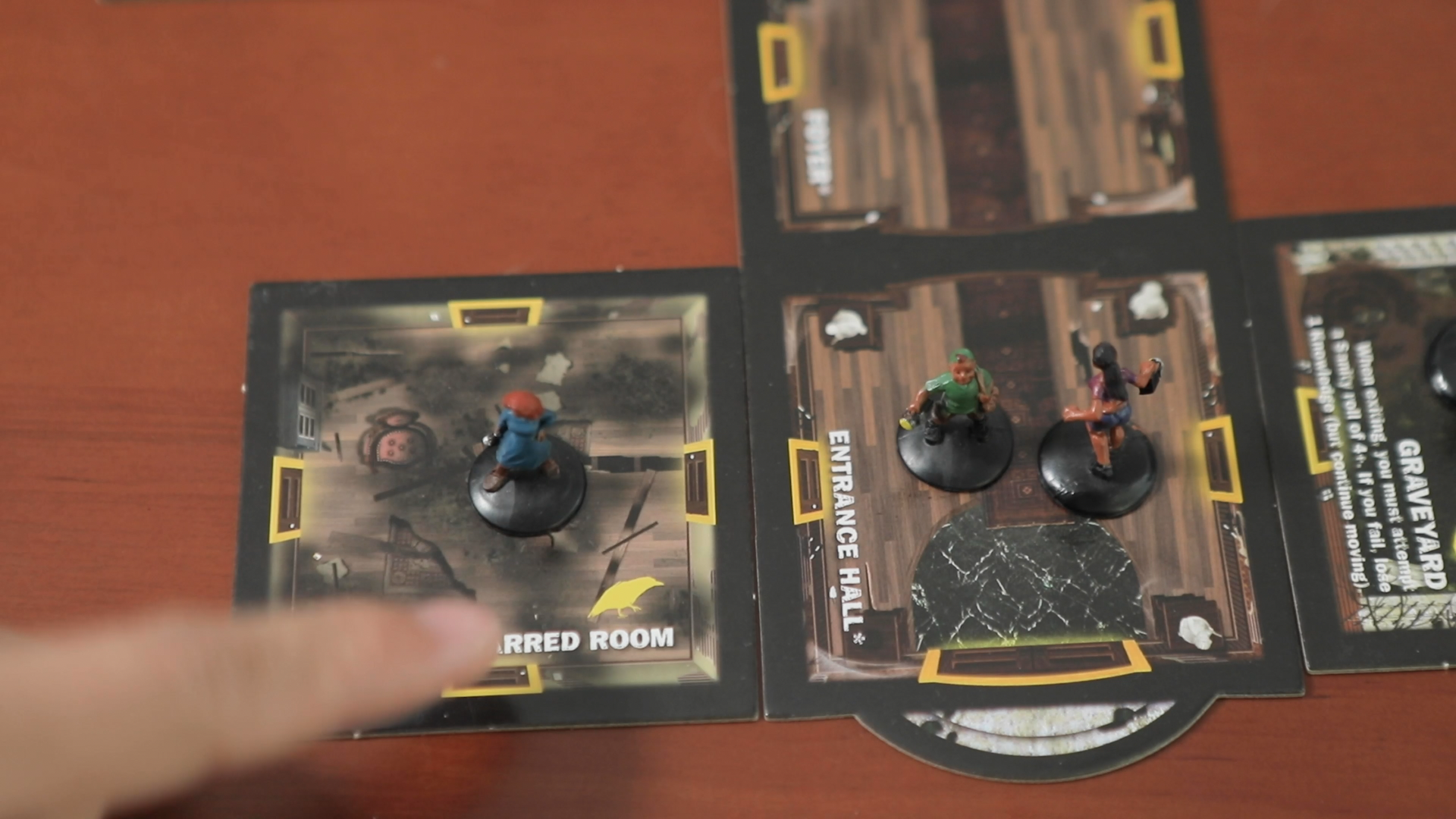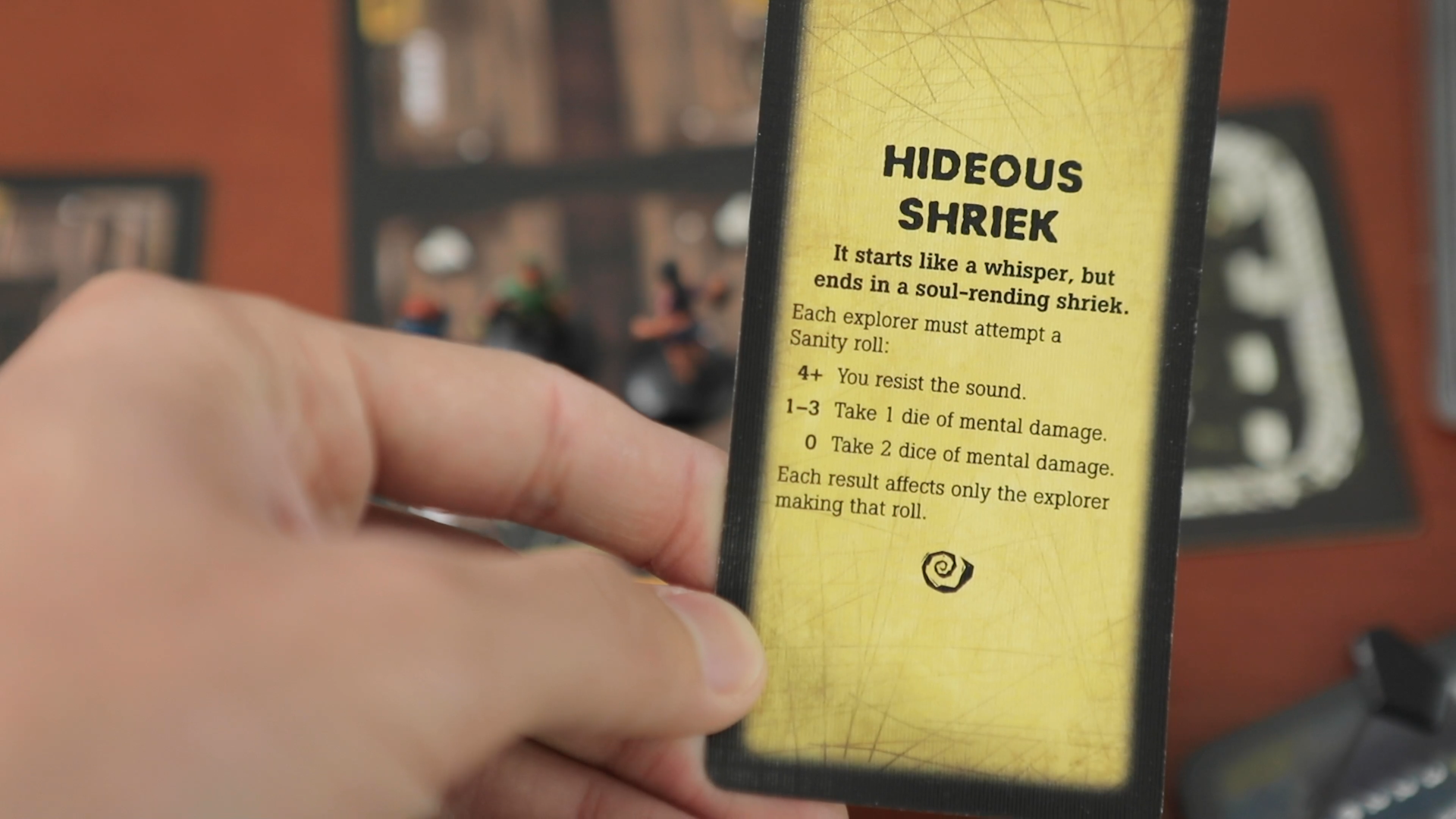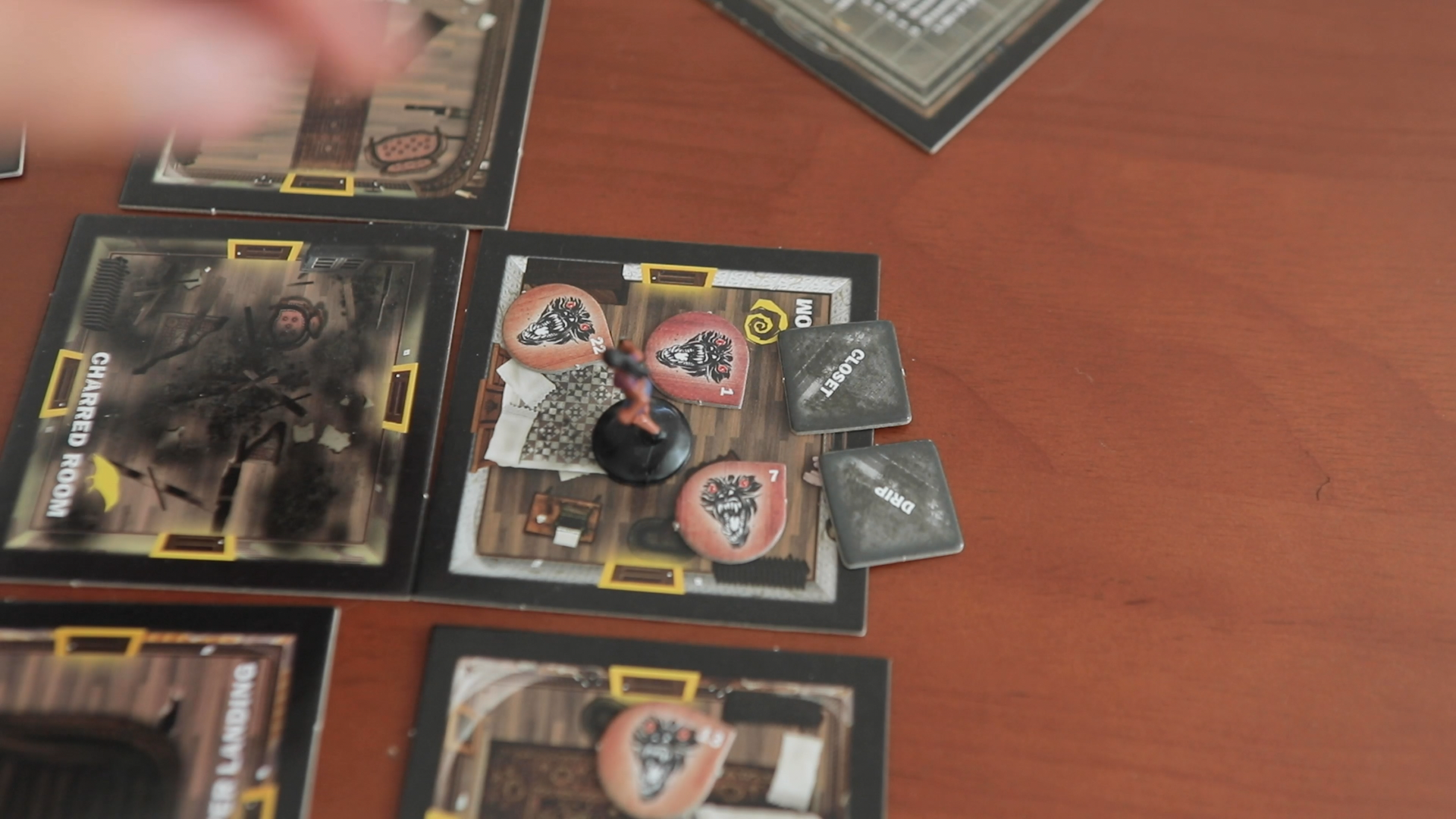Betrayal at House on the Hill Review
Hot fixes are often mandatory to keep the thematic night going.
3-6 players explore through a haunted house, until one is chosen as a traitor to defeat the others. While the gameplay loop is easy, be careful on scenario jankiness. Campy fun in 1-2 hours.
Video published June 16th, 2020

Explore some random, modular house with your friends. What will you find?

Items, events, and omens will paint a story of a unique house.

One will be the traitor, and unleash demonic forces on the adventurers.
Overview & How to Play
If you ever wanted to explore a haunted house with your friends in a board game, this will be one of the first to come to mind.
Betrayal at House on the Hill is exploring that haunted house, with a twist, sometime in the middle of exploring, one of your friends will actually be revealed to be the traitor and seek to defeat his former friends in the next part of the game called the haunt.
Throughout this journey, players will move across the haunted house every turn, sometimes using items they’ve acquired in the house, like Dark Dice or even weapons like Pistols. The haunt actually doesn’t start until players come across cards in new rooms called Omens, which trigger something on their own, then asks players to make a haunt roll.
If the haunt roll is sufficiently high, then the haunt will be triggered, and it will randomly select a traitor. If not, the exploration of the house continues as usual. This haunt roll does get easier over time.
When haunts do happen, the game will actually have you hand out NEW rulebooks, one for the traitor, one for the rest of the players. Everyone then reads their own booklets, each with their own new win conditions, then reconvene and play the game until one of those win conditions are met. Usually, this means lots of deduction for each side on each other’s win conditions, paired with maniacal sprinting around the house and camp-y violence.
Pros
First off, pre-painted minis! Wow, that is always a treat to buy, and these match double-sided player pentagons with all different sorts of stats. Very efficient use of minis here- the athletic looking dude could either be a football stud called Ox Bellows, or a track star called the Flash.
So we’re already in this Americana camp-y mood, and the game stirs up this mood with tons of flavor text abound. Whether its hearing an unsettling shriek as you explore a new room, or a villain’s victory speech, this will all give great context to the insanity before you.
Now for the haunts, or game scenarios. These all feel different through their own win conditions, special monster interactions, and even added item abilities. Games of Betrayal will typically have players (the good guys) scratching their heads on trying to find an epic boss’s weakness, or just panicked to find some certain item so they can finally leave the house. This is all while the game throws all sorts of monsters out: cultists, zombies, ghosts, etc. that all vary in movement, abilities, and methods of killing. Traitors are blessed by eldritch powers to become practical demi-gods and rightfully scare the other players.
The scenarios in general typically require players to really put their heads together, either brainstorming to deduce the actual win condition, or tactically spacing around the map to trade items when necessary. The fact that Betrayal has 2 different haunt booklets, one for each time, hides information well.
Actually, we have to back up a bit and praise the biggest selling part of this game: the unique game structure with 2 parts, first exploring, then playing out a varied scenario. This has players treating the game vastly different, where perhaps the beginning is a little more casual and sandbox-y, but veterans will know that playing selfishly is typically the right play. The game accelerates in pace ridiculously by the second part’s beginning: the map exploring slows in favor of pursuing win conditions or just straight up surviving. Zooming out, its impressive that Betrayal can combine the exploring and then frantic traitor showdown into a coherent structure that flows and actually plays off each other.
This just does the job of replicating a cheap horror flick to a board game. Plenty of replayability with different traitors for 50 different haunts, fun and thoughtful item, and a completely modular house.
Cons & Nitpicks
But you know how we praised the pre-painted minis before? Well, the rest of the components aren’t that great. The black plastic clips to keep track of players’ individual stats are just terrible, as you can’t see what number they’re pointing at. And the cool sounding tokens used in many scenarios, like a Hidden Stairway, Skeleton, or Plant, are all literally just plain black tokens with words on them. That feels like a visual scam. The included insert does a fine job of mixing everything up if you move the box around, so make sure to get plastic bags.
Our huge warning has to be the reading to play the haunt scenarios. Scenarios don’t explain themselves clearly. In short, they have paragraphs on scenario flavor AND mechanics, which gets really confusing. Easily 50% of the reading in the haunt booklets could have been cut out. If there was more labeling of sections, with bullet points, that would help players jump in the action better.
Now for the actual scenarios’ gameplay, we haven’t played all 50 of them, but we noticed that the scenarios can be unbalanced in some games, because of the random timing by which they’re triggered, making games very anti-climatic and sometimes just ending right away. Sometimes scenarios will be too easy or too hard based off of what the characters randomly picked up or the house layout, yet this doesn’t happen TOO frequently for it to be a huge flaw. To ensure the most consistently balanced games, play with 4 people, so you’ll have 3 players versus one traitor.
Final Thoughts
But come on, this is a camp-y game called Betrayal at House on the Hill! So even things like VERY variable game length, from 30 minutes to 3 hours, likely aren’t a huge deal for players because of how casual this game is, and how this unpredictability 100% goes in hand with the theme. More often than not, this game will run 45 minutes to 1.5 hours.















